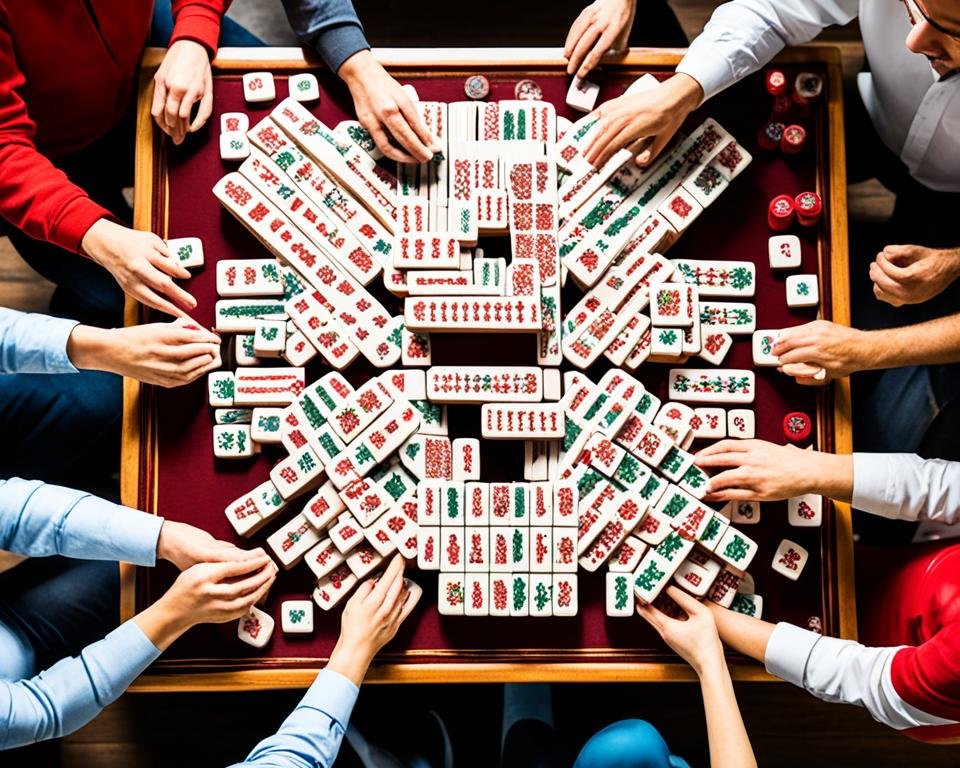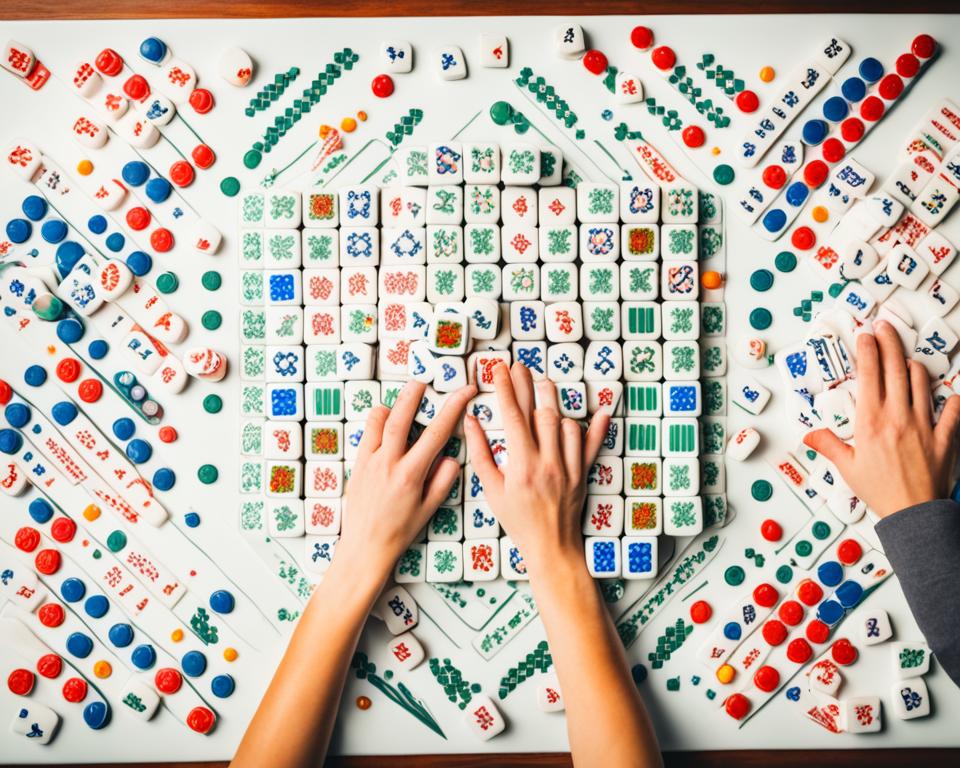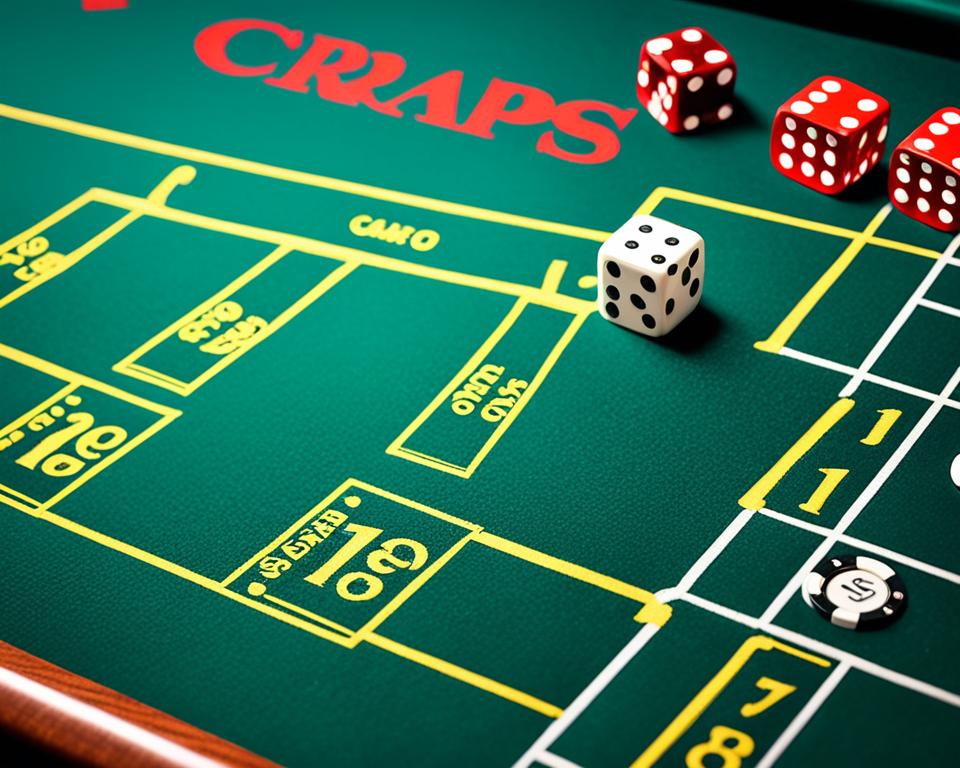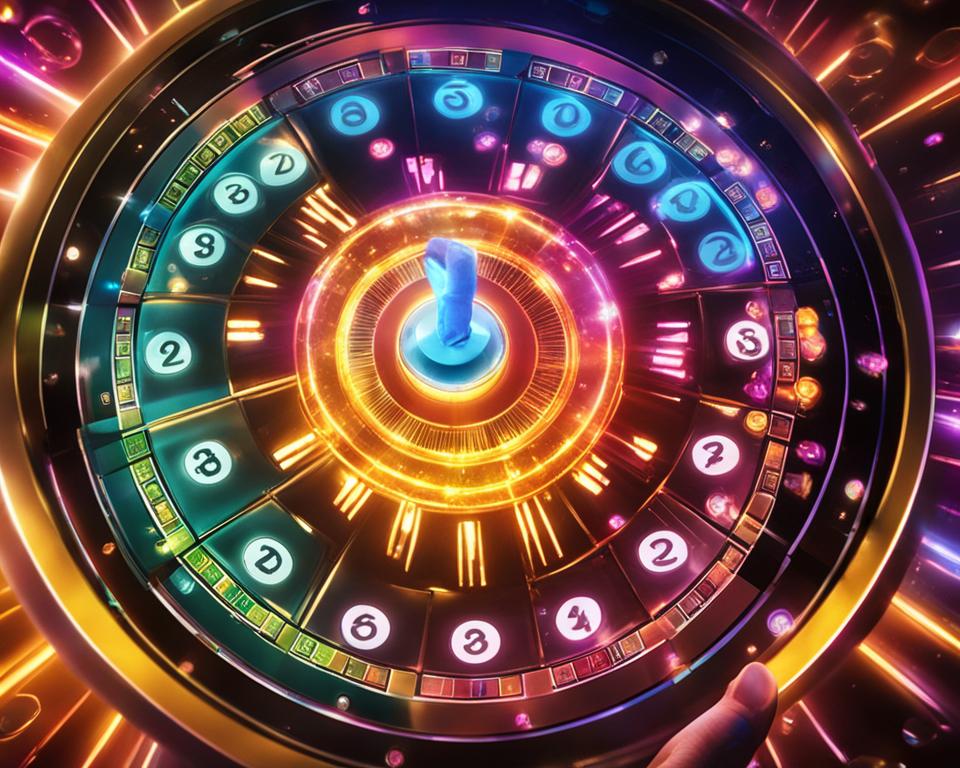Welcome to the beginner’s guide to Mahjong, where you’ll learn everything you need to know to get started with this fascinating game. Mahjong is a traditional Chinese tile game that has gained popularity worldwide. Whether you’re a complete beginner or looking to improve your skills, this quick start guide will provide you with the essential rules, strategies, and tips to enjoy Mahjong to the fullest.
Mahjong is easy to learn but challenging to master. It involves skill, strategy, and a bit of luck. The objective of the game is to create winning combinations of tiles based on specific rules and hand patterns. Each tile holds significance, and by understanding their properties, you’ll be able to form winning hands and outwit your opponents.
In this guide, we’ll cover the basics of Mahjong, including the rules, tile types, reading the Mahjong card, gameplay mechanics, winning hands, scoring system, and essential strategies. By the end, you’ll have a solid foundation to dive deeper into the world of Mahjong and take your skills to the next level.
So, if you’re ready to embark on this exciting journey, let’s start with the fundamentals and get you playing Mahjong in no time!
Key Takeaways:
- Learn the rules and mechanics of Mahjong to understand how the game is played.
- Familiarize yourself with the different types of Mahjong tiles and their significance in forming winning combinations.
- Master the art of reading the Mahjong card to aim for specific hands during gameplay.
- Discover the gameplay process, from setting up the game to taking turns and making strategic decisions.
- Understand the criteria for creating a winning hand and scoring points in Mahjong.
The Tiles in Mahjong
An American Mah Jongg set consists of 152 tiles of different types. These include numbered tiles (craks, dots, and bams), winds, dragons, flowers, and jokers. Each tile serves a specific purpose and has its own set of rules and combinations. By understanding the different types of tiles, you’ll be able to make strategic decisions and form winning hands.
Types of Mahjong Tiles
The tiles in Mahjong can be categorized into several types, each with its unique characteristics and significance:
- Numbered Tiles (Craks, Dots, and Bams): These tiles make up the majority of the Mahjong set and are distinguished by their numbers and suit symbols. Craks represent characters or cracks, dots symbolize circles or coins, and bams depict bamboos. They are often used to form sequences and are essential for creating winning hands.
- Winds: There are four wind tiles: East, West, North, and South. These tiles represent the directions and play a crucial role in determining the prevailing wind and seating position of players. Understanding how to use wind tiles strategically can give you an advantage in the game.
- Dragons: The three dragon tiles are Red Dragon, Green Dragon, and White Dragon. They hold symbolic meanings and can be used to create specific combinations. These tiles require careful consideration as they can be both advantageous and challenging to incorporate into your hand.
- Flowers: Flowers are optional tiles often added to the Mahjong set to enhance gameplay. They are not used to form winning hands, but they can provide additional points or bonuses. Flowers bring an element of excitement and variety to the game.
- Jokers: Jokers are special tiles found in some American Mah Jongg sets. These versatile tiles can be used to substitute any other tile in certain combinations or discarded for additional points. Jokers can be a valuable asset for completing winning hands.
By familiarizing yourself with the different types of Mahjong tiles and their roles in the game, you’ll be equipped to make informed decisions and adapt your strategies to the tiles at hand.
How to Read the Mahjong Card
In American Mah Jongg, the winning combinations of tiles, known as “hands,” are described on a card. This card is divided into sections and each line represents a specific hand. By learning how to read the Mahjong card, players can identify valid tile combinations and aim for specific hands during gameplay.
Let’s take a closer look at the various elements on the Mahjong card:
Abbreviations
The card uses abbreviations to represent different types of melds and tile combinations. These abbreviations help players quickly understand the requirements for each hand. For example, “p” may represent a pung (three of the same tile), “k” for a kong (four of the same tile), and “c” for a chow (three consecutive tiles in the same suit).
Combinations
The Mahjong card displays different combinations of tiles that form a valid hand. These combinations are usually represented by numbers or letters, indicating the specific tiles required. By referencing the combinations on the card, players can gather the necessary tiles to complete a hand.
Colors
Colors are used on the Mahjong card to differentiate between different types of hands. For example, a red color may indicate a concealed hand, where all tiles are kept hidden until the player declares a winning hand. A green color may represent an open hand, where some or all of the tiles are exposed to other players.
Notes
Additional notes may be included on the Mahjong card to provide further instructions or clarifications for specific hands. These notes can help players understand any special rules or variations associated with certain hands.
By familiarizing themselves with the elements on the Mahjong card, players can gain a better understanding of the requirements for each hand. This knowledge allows them to strategize and aim for specific combinations, increasing their chances of winning the game.
To provide a visual reference, here is an image of a Mahjong card:
Playing the Game of Mahjong
Playing Mahjong is an engaging and strategic experience that requires careful decision-making, observation, and anticipation of other players’ moves. By following the rules and understanding the flow of the game, you’ll be able to enjoy Mahjong with confidence and mastery.
Setting Up the Game
Prior to starting a game of Mahjong, it’s important to arrange the players, shuffle the tiles, and build the walls. The number of players can vary, with the game typically played by four participants. The tiles are shuffled thoroughly, and each player then takes turns building walls by arranging the tiles face down in a specific pattern.
Here’s a step-by-step guide to setting up a game of Mahjong:
- Arrange the players: Determine the order of play and assign positions for each player.
- Shuffle the tiles: Mix the tiles thoroughly to ensure a random distribution.
- Build the walls: Start by creating two rows of tiles in front of each player, forming a square shape. The walls should be two tiles high and at least 18 tiles long.
The setup phase is essential for ensuring fairness and integrity in the game, as it creates an equal starting point for all participants.
Gameplay and Turns
Once the game is set up, the gameplay begins. Each player takes turns drawing and discarding tiles, aiming to form melds and ultimately achieve a winning hand. The gameplay involves a combination of strategy, observation, and adaptability.
Here’s a breakdown of a player’s turn in Mahjong:
- Draw a tile: At the beginning of their turn, a player draws a tile from the wall. The tile can either be taken from the end of the wall or from the dead wall, depending on the specific rules being followed.
- Consider options: After drawing a tile, the player evaluates their options. They can choose to form melds by grouping tiles together or discard a tile that is no longer needed.
- Discard a tile: At the conclusion of their turn, the player must discard one tile face up, placing it in the center of the playing area. This tile is now available for other players to pick up.
The gameplay continues in a clockwise direction, with each player taking turns until a player forms a winning hand or all the tiles have been exhausted. It’s important to pay attention to the tiles being discarded by other players, as this can provide valuable information about their hand and strategy.
Strategic Decision-Making
Playing Mahjong involves strategic decision-making at every turn. As a player, you must consider the tiles in your hand, the ones being discarded by others, and the potential melds and combinations you can create. It’s essential to assess each tile’s value and its potential contribution to your winning hand.
Observation is also crucial in Mahjong gameplay. By carefully watching the movements of other players and their discards, you can gain insights into their strategies and adjust your own accordingly. Anticipating their moves and adapting your gameplay can give you a competitive edge during the game.
By following the rules and honing your strategic skills, you’ll gradually become more proficient in playing Mahjong. It’s a game that rewards patience, observation, and calculated risk-taking. So gather your friends or join an online community to experience the thrill of Mahjong gameplay firsthand!
What Makes a Winning Hand in Mahjong
A winning hand in Mahjong consists of four melds and a pair of matching tiles. To form melds, players need to create specific combinations using their tiles. These combinations include:
- Pung: A set of three identical tiles. For example, three tiles of the same suit and rank (e.g., three 5 of bam).
- Kong: A set of four identical tiles. It can be formed by adding a tile to an existing pung or by drawing four of the same tile.
- Chow: A set of three consecutive numbers in the same suit. For example, a 1, 2, and 3 of dots.
In addition to melds, players also need to have a pair of matching tiles. This pair can be any two tiles of the same kind. For example, two 9 of craks.
By understanding the different types of melds and pairs, players can work towards creating a winning hand and scoring points in Mahjong.
Scoring in Mahjong
Scoring is an essential aspect of Mahjong that determines the winner and adds a competitive element to the game. Understanding the Mahjong scoring system, point values, and scoring rules is crucial for players to track their progress and compete with others.
In Mahjong, scoring is based on various factors, including the types of melds created, whether they are exposed or concealed, and any bonus points earned from special tiles or combinations. Each type of meld, such as pungs, kongs, and chows, has a specific point value assigned to it.
The Mahjong point system rewards players for concealed melds, which are melds that are not revealed to other players. Concealed melds are typically worth more points than exposed melds. This encourages players to strategize and aim for concealed melds to increase their score.
Additionally, certain tiles, such as flowers and seasons, can earn bonus points. These tiles are not part of the regular tile sets used for melds but can be acquired during gameplay. Flowers and seasons can add extra points to a player’s score, making them valuable assets.
It’s important to note that scoring in Mahjong can vary depending on the specific game variant being played. Each variant may have its own unique scoring rules and point values. Players should familiarize themselves with the specific scoring rules of the variant they are playing to ensure accurate scoring.
“The scoring system in Mahjong adds an exciting dimension to the game. It rewards players for their strategic decisions and successful meld combinations. By understanding the scoring rules and point values, players can track their progress and aim for higher scores.”
Mahjong Scoring Table
| Meld Type | Point Value |
|---|---|
| Pung | 2 |
| Kong | 8 |
| Chow | 1 |
| Flower | 2 |
| Season | 2 |
This table provides a basic overview of the point values for different types of melds in Mahjong. It’s important to consult the specific scoring rules of the variant being played for accurate point values and additional scoring details.
By understanding the Mahjong scoring system and point values, players can strategize their gameplay to maximize their score and improve their chances of winning. Keeping track of points adds another layer of excitement to the game and enhances the overall Mahjong experience.
Strategies for Mahjong
In order to excel at Mahjong, it is essential to develop effective strategies that can give you an edge over your opponents. By understanding the game’s mechanics, reading the card effectively, and making calculated decisions during gameplay, you can significantly improve your chances of achieving victory. Here are some key strategies to incorporate into your Mahjong gameplay:
- Targeting specific hands: One strategy is to focus on targeting specific hands listed on the Mahjong card. Familiarize yourself with different combinations and patterns that can lead to a winning hand. By identifying potential winning hands early on and adapting your gameplay accordingly, you can increase your chances of success.
- Paying attention to discards: Keep a close eye on the tiles that your opponents discard. This can provide valuable information about their hand and help you make informed decisions. Pay particular attention to tiles that have been discarded multiple times, as they may indicate which hands your opponents are targeting.
- Utilizing the jokers effectively: The presence of jokers in the game can be advantageous if used strategically. Jokers can be used to substitute any tile, allowing you to complete specific combinations. Plan ahead and strategically utilize the jokers to your advantage, maximizing your chances of winning.
By incorporating these strategies into your Mahjong gameplay, you can enhance your decision-making skills, increase your chances of forming winning hands, and outplay your opponents. Remember, practice makes perfect, so keep honing your skills and experimenting with different strategies to find what works best for you.
| Strategy | Description |
|---|---|
| Targeting specific hands | Focusing on particular winning hands listed on the Mahjong card |
| Paying attention to discards | Observing the tiles discarded by opponents to gain insight into their hand |
| Utilizing the jokers effectively | Strategically using jokers to substitute tiles and complete combinations |
Mahjong Variations
While this guide focuses on American Mah Jongg, it’s important to note that there are many variations of Mahjong played around the world. These variations differ in rules, tile sets, and scoring systems. Some popular variations include Chinese Mahjong, Japanese Mahjong, and Riichi Mahjong. Exploring these variations can offer a fresh perspective on the game and expand your Mahjong-playing experience.
Chinese Mahjong:
Chinese Mahjong is one of the most widely recognized and played variations of Mahjong. It features a set of 144 tiles with different suits, including characters, circles, and bamboos. The goal is to collect specific sets of tiles and be the first player to form a complete hand. Chinese Mahjong emphasizes strategic thinking, calculation, and adapting to changing game dynamics.
Japanese Mahjong:
Japanese Mahjong, also known as Riichi Mahjong, has gained popularity both in Japan and internationally. It features a set of 136 tiles, with additional tiles known as Dora indicators that can enhance scoring opportunities. The game focuses on yaku (hand patterns) and riichi (ready hand), where players aim to build specific combinations and score the most points. Japanese Mahjong is known for its fast-paced and competitive gameplay.
European Mahjong:
European Mahjong, also referred to as Classical Mahjong or Western Mahjong, is a variation popular in Europe and the United States. It is played with a set of 144 tiles that consist of suits, honor tiles, and bonuses. European Mahjong follows a distinct scoring system and ruleset that differs from other variations. It emphasizes skillful tile matching and strategic decision-making to create winning combinations.
Other Mahjong Variations:
Besides the well-known Chinese, Japanese, and European Mahjong variations, there are numerous other regional and cultural variations played worldwide. These include:
- American Mah Jongg
- Hong Kong Mahjong
- Taiwanese Mahjong
- Korean Mahjong
Each of these variations brings its own unique rules, scoring systems, and gameplay elements. Exploring these different types of Mahjong can broaden your understanding of the game and offer exciting new challenges.

Comparison of Mahjong Variations
| Variation | Number of Tiles | Scoring System | Game Dynamics |
|---|---|---|---|
| Chinese Mahjong | 144 | Based on sets and combinations | Strategic thinking and adaptation |
| Japanese Mahjong | 136 | Yaku-based scoring | Fast-paced and competitive |
| European Mahjong | 144 | Distinct scoring system | Skillful tile matching and strategy |
| American Mah Jongg | 152 | Based on National Mah Jongg League rules | Combination strategy and card play |
| Hong Kong Mahjong | 144 | Bonus tiles and special hands | Complex scoring and tactical gameplay |
Exploring these Mahjong variations allows players to discover diverse strategies, unique gameplay dynamics, and a greater appreciation for the cultural heritage of the game.
Online Mahjong Resources
If you’re looking to practice or play Mahjong online, there are several resources available. Online Mahjong games and apps allow you to play against AI opponents or real players from around the world. Additionally, there are tutorials and practice platforms that can help you enhance your skills and learn new strategies. By utilizing these online resources, you can sharpen your Mahjong abilities and enjoy the game at your convenience.
Mahjong Games
Online Mahjong games offer a wide variety of options for players of all skill levels. Whether you’re a beginner looking for a casual game or a seasoned player seeking a challenging experience, there’s a game out there for you. These games provide immersive graphics, realistic gameplay, and customizable settings to enhance your Mahjong experience. Some popular online platforms for Mahjong games include:
- ABC Mahjong
- Mahjong Time
- 247 Mahjong
Mahjong Tutorials
If you’re new to Mahjong or want to improve your gameplay, online Mahjong tutorials are a valuable resource. These tutorials provide step-by-step instructions, tips, and strategies to help you understand the rules and develop winning strategies. Whether you prefer video tutorials or written guides, there are resources available to cater to your learning style. Some popular online Mahjong tutorial platforms include:
- Mahjong Academy
- Mahjong Teachers
- Mahjong Knowledge Base
Mahjong Practice Platforms
Practice makes perfect, and online Mahjong practice platforms give you the opportunity to hone your skills. These platforms offer virtual practice games with AI opponents or interactive exercises that allow you to test your knowledge and improve your gameplay. By practicing regularly, you’ll gain confidence and develop strategies to excel in the game. Some popular online Mahjong practice platforms include:
- Mahjong Practice
- Mahjong Training Center
- Mahjong Simulator
With the abundance of online Mahjong resources at your disposal, you can take your passion for the game to new heights. Whether you’re playing for fun or looking to compete at a professional level, these resources will help you refine your skills, learn new strategies, and connect with fellow Mahjong enthusiasts from around the world.
| Resource Type | Name | Description |
|---|---|---|
| Mahjong Games | ABC Mahjong | An online platform with a wide selection of Mahjong games catering to players of all skill levels. |
| Mahjong Time | A popular online platform that offers multiplayer Mahjong games and tournaments. | |
| 247 Mahjong | A collection of Mahjong games available to play online for free. | |
| Mahjong Tutorials | Mahjong Academy | An online tutorial platform that provides comprehensive guides and resources for learning Mahjong. |
| Mahjong Teachers | A website offering video tutorials and lessons taught by experienced Mahjong players. | |
| Mahjong Knowledge Base | An extensive online database of Mahjong tutorials, strategies, and articles. | |
| Mahjong Practice Platforms | Mahjong Practice | An online platform where you can play Mahjong against AI opponents and practice your skills. |
| Mahjong Training Center | A virtual training center that offers interactive exercises and practice games to improve your Mahjong abilities. | |
| Mahjong Simulator | A software program that allows you to practice Mahjong on your computer with customizable settings. |
Mahjong Etiquette
Mahjong, like many traditional games, has its own set of etiquettes and customs. It’s important to be respectful and follow proper Mahjong behavior to maintain a harmonious and enjoyable gaming environment for everyone involved.
Here are some key Mahjong etiquette guidelines to keep in mind:
- Respect other players’ tiles: Avoid touching or moving other players’ tiles without permission. Each player is responsible for their own tiles, and any interference can disrupt the game.
- Avoid table talk: During the game, it’s important to focus on your own strategy and avoid discussing your hand or the game with other players. This helps maintain fairness and prevents potential distractions or unfair advantages.
- Follow the pace of the game: Mahjong is a game that requires concentration and focus. Be mindful of the rhythm and pace of the game, taking your turn promptly and avoiding unnecessary delays.
- Communicate clearly: When declaring a meld or calling for a tile, communicate your intentions clearly and concisely. Use gestures or specific phrases that are commonly understood among players to avoid confusion.
- Show good sportsmanship: Whether you win or lose, it’s important to display good sportsmanship and respect towards all players. Congratulate the winner and gracefully accept defeat, remembering that Mahjong is ultimately a social game meant to be enjoyed together.
- Observe local customs: Different regions or groups may have specific Mahjong customs or variations. When playing with others, it’s important to be aware of any local customs and adapt accordingly to show respect and appreciation.
By understanding and practicing good Mahjong etiquette, you contribute to a positive and pleasant gaming experience for everyone involved. Enjoy the game, make new friends, and appreciate the cultural richness of this timeless pastime.

Conclusion
In conclusion, this Mahjong quick start guide provides beginners with the essential information needed to learn and play the game. From understanding the tiles and card to mastering the gameplay and strategies, this guide serves as a comprehensive resource for Mahjong enthusiasts.
By following the guidance and practicing regularly, you’ll improve your skills and become a confident Mahjong player. Whether you’re playing with friends or joining online communities, Mahjong offers a world of fun and excitement.
Enjoy the journey as you explore the intricate combinations, engage in strategic decision-making, and immerse yourself in the rich culture of this ancient Chinese game. Get ready to experience the thrill of Mahjong and discover the endless possibilities it has to offer. Start playing today!
FAQ
What is Mahjong?
Mahjong is a tile-based game that originated in China and is popular worldwide. It is played with a set of tiles and involves skill, strategy, and a bit of luck.
How many tiles are in an American Mah Jongg set?
An American Mah Jongg set consists of 152 tiles of different types. These include numbered tiles, winds, dragons, flowers, and jokers.
What is a Mahjong card?
A Mahjong card is used to describe the winning combinations of tiles, or “hands.” It is organized into sections, with each line representing a specific hand.
How do you set up a game of Mahjong?
Setting up the game involves arranging the players, shuffling the tiles, and building walls. Each player then takes turns drawing and discarding tiles to form melds and a winning hand.
What makes a winning hand in Mahjong?
A winning hand in Mahjong consists of four melds and a pair of matching tiles. Melds can be formed by creating specific combinations, such as pungs, kongs, and chows.
How is scoring done in Mahjong?
Scoring in Mahjong is based on the types of melds created, whether they are exposed or concealed, and any bonus points earned from special tiles or combinations.
What are some strategies for playing Mahjong?
Strategies in Mahjong include targeting specific hands, paying attention to discards, and utilizing jokers effectively to increase your chances of forming winning hands.
Are there different variations of Mahjong?
Yes, there are many variations of Mahjong played around the world, including Chinese Mahjong, Japanese Mahjong, and Riichi Mahjong. Each variation has its own rules and scoring systems.
Are there online resources for Mahjong?
Yes, there are online Mahjong games, tutorials, and practice platforms available that can help you enhance your skills and learn new strategies.
What is Mahjong etiquette?
Mahjong etiquette refers to the proper behavior and guidelines that should be followed while playing the game, such as not touching other players’ tiles without permission and avoiding table talk during the game.





